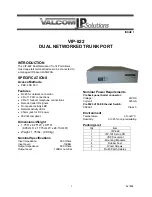
51
Configuring MPLS TE
Overview
TE and MPLS TE
Network congestion can degrade the network backbone performance. It might occur when network
resources are inadequate or when load distribution is unbalanced. Traffic engineering (TE) is
intended to avoid the latter situation where partial congestion might occur because of improper
resource allocation.
TE can make the best use of network resources and avoid uneven load distribution by the following:
•
Real-time monitoring of traffic and traffic load on network elements.
•
Dynamic tuning of traffic management attributes, routing parameters, and resources
constraints.
MPLS TE combines the MPLS technology and traffic engineering. It reserves resources by
establishing LSP tunnels along the specified paths, allowing traffic to bypass congested nodes to
achieve appropriate load distribution.
With MPLS TE, a service provider can deploy traffic engineering on the existing MPLS backbone to
provide various services and optimize network resources management.
MPLS TE basic concepts
•
CRLSP
—Constraint-based Routed Label Switched Path. To establish a CRLSP, you must
configure routing, and specify constraints, such as the bandwidth and explicit paths.
•
MPLS TE tunnel
—A virtual point-to-point connection from the ingress node to the egress node.
Typically, an MPLS TE tunnel consists of one CRLSP. To deploy CRLSP backup or transmit
traffic over multiple paths, you need to establish multiple CRLSPs for one class of traffic. In this
case, an MPLS TE tunnel consists of a set of CRLSPs. An MPLS TE tunnel is identified by an
MPLS TE tunnel interface on the ingress node. When the outgoing interface of a traffic flow is
an MPLS TE tunnel interface, the traffic flow is forwarded through the CRLSP of the MPLS TE
tunnel.
Static CRLSP establishment
A static CRLSP is established by manually specifying the incoming label, outgoing label, and other
constraints on each hop along the path that the traffic travels. Static CRLSPs feature simple
configuration, but they cannot automatically adapt to network changes.
For more information about static CRLSPs, see "
."
Dynamic CRLSP establishment
Dynamic CRLSPs are dynamically established as follows:
1.
An IGP advertises TE attributes for links.
2.
MPLS TE uses the CSPF algorithm to calculate the shortest path to the tunnel destination. The
path must meet constraints such as bandwidth and explicit routing.
3.
A label distribution protocol (such as RSVP-TE) advertises labels to establish CRLSPs and
reserve bandwidth resources on each node along the calculated path.
















































